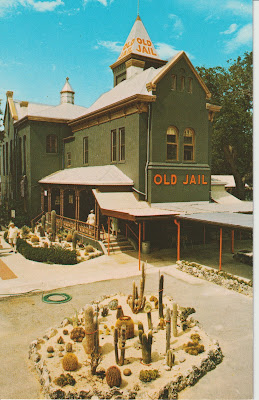San Giacomo [St. James], Trieste, Italy, 1854
This is one postcard in a booklet set. It features a painting of San Giacomo, or St. James, church and part of the surrounding area. My friend who lives in Trieste recently sent this card and two others from the set. The only information about the picture is printed on the back of the card at the upper left: “Nuova Chiesa di s. Giacomo in Trieste, 1854.” My friend’s note on the card provided some additional information. He says in part: “This hill was a good place to see afar and protect the town from raids. The neighborhood is very old around the cathedral. … It is a very urbanized quarter [now] so all the trees and field have disappeared, alas. But it is quite lively, with foreign communities from the Balkans and it is a popular neighborhood, not yet gentrified or overwhelmed by tourism.”
Notice the detail on the church, the people’s clothing, the horse and wagon, and the hint of the landscape in the background. The square in front of the church is called Campo San Giacomo. The church was built between 1851 and 1854. It seems likely that this picture on the card is representative of the way the church and square appeared when the church was new. Today this part of the city, near the center of Trieste, is the most populous and houses about one quarter of the city inhabitants. The neighborhood has every service from supermarkets, bars, taverns, restaurants, to schools. There is also a “washhouse” that can be visited where a permanent exhibit tells the story of the washerwomen. This same building is also a venue that can be used free of charge as a meeting place for citizen events and hosting cultural associations.
As always, thank you M for sending the card!
For additional information, see:
https://it.wikipedia.org/wiki/San_Giacomo_(Trieste) [select translate option for English]






















